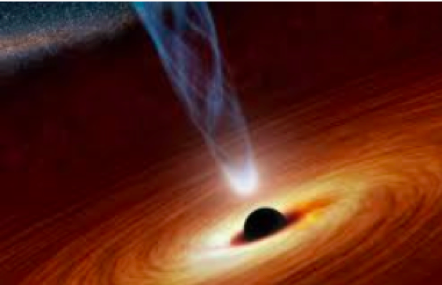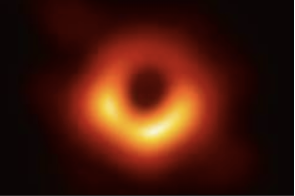Capturing The First Photo Of A Black Hole

Now, after years of research and collaboration at the international level, some of the world’s most powerful radio telescopes have captured an image of a supermassive black hole’s event horizon. By doing so, they proved that the predictions arising from Einstein’s theory of general relativity are valid even in the most extreme cosmic environment possible.

The catch is a significant event for astronomers and astrophysicists. It may not look much, however the multifaceted nature of the work that went in to getting any picture whatsoever is astounding . We have no knowledge of what lies inside, but we do know that our universe ends abruptly at this terrifying dark abyss.
In general relativity, an event horizon (EH) is a region in spacetime beyond which events cannot affect an outside observer. In layman’s terms, it is defined as the shell of “points of no return”, i.e., the boundary at which the gravitational pull of a massive object becomes so great as to make escape impossible. An event horizon is most commonly associated with black holes.
This black hole is supermassive and resides in the center of Messier 87, or M87, an elliptical giant galaxy over in Virgo. It is around 54.5 million light-years from earth. Notwithstanding its relative little size of about half a light day, its thickness shows a mass of an expected 6.5 billion suns.
The issues of capturing a black hole are large and abundant. The separation for one, implies the telescope needs to concentrate in on an infinitesimally little piece of the starry sky, regarding a matter that in every practical sense, is undetectable. Besides that, as no light can escape or be mirrored, there’s nothing for any camera sensor regardless of how technically advanced to get a picture.
To resolve this, astronomers used a method known as very long baseline interferometry to combine the collective observing power of eight of the world’s most powerful radio telescopes to do the job.
The Event Horizon Telescope (EHT) is a large telescope array consisting of a global network of radio telescopes and combining data from stations around the Earth. The aim of the EHT project is to observe the immediate environment of supermassive black holes, with angular high enough to resolve structures on the size scale of the black hole’s event horizon.
The light we see is from the hot gas that gets warmed as it traverses the occasion skyline and in to the haziness of the black hole.
The science, computer algorithm and arithmetic that went in to extracting this picture from all the loads of date is phenomenal.
